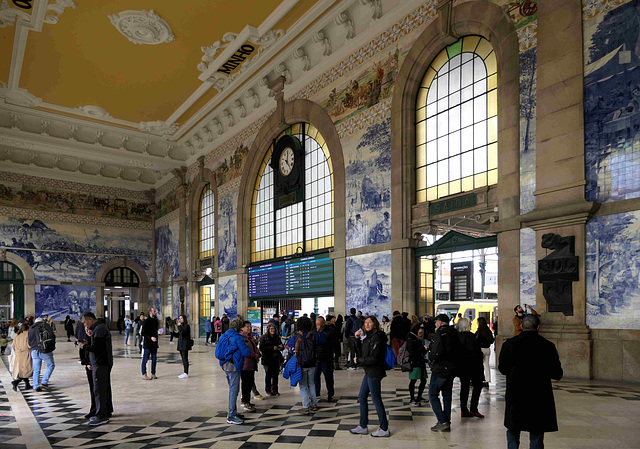Location
Lat, Lng: 41.145561, -8.610526
You can copy the above to your favourite mapping app.
Address: Secção Museológica da CP de Bragança
You can copy the above to your favourite mapping app.
Address: Secção Museológica da CP de Bragança
Keywords
Authorizations, license
-
Visible by: Everyone -
All rights reserved
-
105 visits
Porto - Estação Ferroviária São Bento


With around 250,000 inhabitants, Porto is the largest city in the north of Portugal. More than 1.7 million people live in the "Greater Porto area", the metropolitan region.
The historic centre of Porto was declared a UNESCO World Heritage Site in 1996. Port wine is named after Porto because the wineries of Vila Nova de Gaia on the south bank of the Douro River are the centres for packaging, transporting and exporting the fortified wine.
I have uploaded many photos from previous visits.
So I will limit myself and only upload a few.
The construction of the station started in 1904, based on plans by architect José Marques da Silva. The large panels of around twenty thousand azulejo tiles (551 square meters) were designed and painted by Jorge Colaço. The murals represent moments in the country's history and the multicolored panels depict rural scenes showing the people of various regions.
The historic centre of Porto was declared a UNESCO World Heritage Site in 1996. Port wine is named after Porto because the wineries of Vila Nova de Gaia on the south bank of the Douro River are the centres for packaging, transporting and exporting the fortified wine.
I have uploaded many photos from previous visits.
So I will limit myself and only upload a few.
The construction of the station started in 1904, based on plans by architect José Marques da Silva. The large panels of around twenty thousand azulejo tiles (551 square meters) were designed and painted by Jorge Colaço. The murals represent moments in the country's history and the multicolored panels depict rural scenes showing the people of various regions.
Ulrich Dinges, Philippe Collard, Marco F. Delminho, Paolo Tanino and 2 other people have particularly liked this photo
- Keyboard shortcuts:
Jump to top
RSS feed- Latest comments - Subscribe to the comment feeds of this photo
- ipernity © 2007-2025
- Help & Contact
|
Club news
|
About ipernity
|
History |
ipernity Club & Prices |
Guide of good conduct
Donate | Group guidelines | Privacy policy | Terms of use | Statutes | In memoria -
Facebook
Twitter











Sign-in to write a comment.